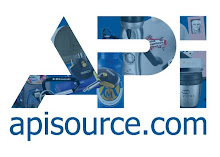 This spring, Google announced it was discontinuing 2-D bar codes (or QR codes) used in its Google Places service and replacing them with near-field communication (NFC) chips. This prompted many media observers to predict that 2-D bar codes would soon be phased out. As Google goes, so goes the world—or so it’s commonly thought.
This spring, Google announced it was discontinuing 2-D bar codes (or QR codes) used in its Google Places service and replacing them with near-field communication (NFC) chips. This prompted many media observers to predict that 2-D bar codes would soon be phased out. As Google goes, so goes the world—or so it’s commonly thought. NFC technology is still in its infancy and far from the mainstream. However, if 2-D codes really are about to become passé in favor of NFC technology, the promotional products industry will say goodbye to one of its biggest innovations in recent years.
The details of the two technologies are these: NFC chips are embedded in an object—paper, toys, even fabric—and read by simply waving an NFC-capable smart phone in the area near the chip. This prompts the phone to load a predetermined web page or take some other action. Similarly, 2-D codes are applied (often by printing) to an object and read once users download a code-reading application for their smart phone and use the app to snap a picture of the code with the phone’s camera.
In the case of Google Places, which lets shopkeepers post placards that patrons can scan to instantly read reviews and see special offers on their phones, using NFC technology means faster scan times but also expensive chips that must be embedded, rather than printed, in signage.
Aside from marketing and advertising, NFC technology is most expected to change the way consumers pay for goods and services. NFC “mobile wallet” technology is already prevalent in Japan and cropping up stateside in places such as Los Angeles’ metro system, which currently equips bus drivers with NFC-enabled phones for quickly swiping passengers’ pre-paid tickets. Salt Lake City, Utah, has reportedly signed on to outfit the city with a true mobile commerce option in 2012.
Will 2-D Codes Succumb To NFC Technology?
Three technology gurus lend their expert opinions.
Hamilton Chan, CEO
Paperlinks, a digital marketing company that specializes in QR codes
Both technologies are real-world hyperlinks that help users get from point A (data demand) to point B (solution) quickly. Each technology has its pluses and minuses. With QR codes, marketers can cast a larger net to attract more users because all smart phones and many feature phones have QR readers in them. With NFC the net is much smaller, with the Google Nexus S phone currently the only mainstream phone in the U.S. market with NFC capability. The cost of printing an NFC chip is roughly 10 cents per piece. The estimated time is roughly two weeks. Currently few print providers can fulfill NFC chip printing. All eyes are on Apple and whether the iPhone 5 will include an NFC chip. If so, expect the applications to proliferate quickly. If not, NFC may be waiting in the wings for another year.
Brett Circe, VP interactive services
Starmark International, a branding and marketing consultancy
I don’t see NFC as a replacement for QR. While some of the technology overlaps, their strengths are in different areas. Anyone can print a QR code on their ads, brochures and signage. NFC requires two pieces of hardware that communicate with each other to transfer data. The strengths of NFC are in data encryption, such as mobile ticketing (bus, subway, airline boarding passes), mobile commerce (the vendor will never have access to your credit card number as it’s encrypted) and small data transfers (similar to using bluetooth to download music or photos). I see them as complimentary with some overlap, and Google’s action is puzzling to me.
Anthony Iacovone, founder and chief innovation officer
Augme Technologies, Inc., a mobile marketing technology and strategic services provider
NFC tags are still about a penny in volume and require additional processes for implementation in print. This is cost-prohibitive for most media packaging, magazines and newspapers, so visual identities such as QR codes, image recognition and augmented realities will prevail for these mediums over the next few years.
The read capability of both 2-D codes and NFC is very similar. What should get marketers and consumers excited is the “write” capabilities of the chips. NFC turns phones into secure wallets to pay and transact coupons. The coupon function can help eliminate a very tricky environment at retail (grocery stores are a key area) to use the phone as a redemption facility.
There are virtually no smart-phone applications to support NFC read capabilities today and only one commercial U.S. phone to support it. With QR codes, there is much more control over the content delivered and at least 20 million phones with readers and growing. NFC is still in a very nascent stage of developing true standards around what gets embedded in the codes and how each application designed to read NFC will eventually route it.
Google’s goal here is to be disruptive. I believe they are skipping a step in the evolution of the space. Their long-term goal is a play on the commerce side, but by motivating the market they may be looking to get into the transactional side of the payment market for NFC.


It really is amazing to see how technology changes so rapidly. We have the world chasing after these QR codes and they are actually being replaced when half of us haven't even got them yet. Local SEO.
ReplyDeleteHow true. It doesn't make it easy to keep up!
ReplyDelete